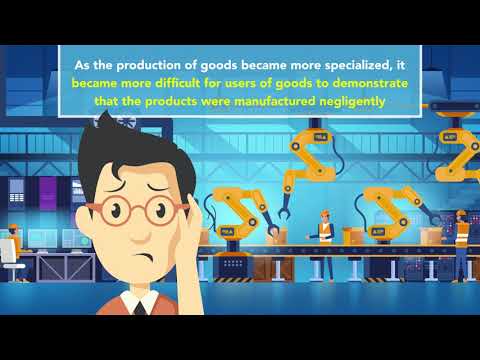
Welcome to this informative article on “Understanding the Scope of Recovery under Product Liability Law in the United States.” We are here to shed light on this topic and help you navigate through the complexities of product liability law. However, it is important to note that while we strive to provide accurate and reliable information, it is always crucial to cross-reference with other sources or consult legal advisors for specific cases. With that said, let’s dive into the fascinating world of product liability law in the United States.
Understanding Product Liability Theory of Recovery in US Law
Understanding the Scope of Recovery under Product Liability Law in the United States
Product liability law in the United States is designed to protect consumers from harm caused by defective products. When a product is found to be defective and causes injury or damage, the injured party may be entitled to recover compensation for their losses. This article aims to provide a detailed explanation of the concept of understanding the scope of recovery under product liability law in the United States.
📋 Content in this article
1. Introduction to Product Liability Law:
Product liability law refers to the legal framework that holds manufacturers, distributors, and sellers responsible for injuries or damages caused by their products. The main objective of this law is to ensure that consumers have access to safe and reliable products.
2. Theories of Recovery:
To recover compensation under product liability law, the injured party must establish a theory of recovery. There are three main theories of recovery in product liability cases:
Under strict liability, a plaintiff can recover compensation without proving negligence on the part of the defendant. The injured party must show that the product was defective and that the defect caused the injury or damage.
In a negligence claim, the injured party must prove that the defendant breached their duty of care, resulting in the defective product causing harm. This may involve showing that the defendant failed to design, manufacture, or warn about the dangers associated with the product.
Breach of warranty occurs when a product does not meet the promises or guarantees made by the manufacturer or seller. There are two types of warranties: express warranties (explicit promises made by the manufacturer) and implied warranties (automatic assurances that the product is fit for its intended purpose).
3.
To establish a theory of recovery, the injured party must also prove that the product was defective. There are three main
Understanding the Theories of Recovery in Products Liability Lawsuits
Understanding the Scope of Recovery under Product Liability Law in the United States
Product liability law in the United States aims to protect consumers from harm caused by defective products. When a person is injured or suffers damage due to a defective product, they may be entitled to compensation for their losses. The scope of recovery in product liability lawsuits is based on several theories, each with its own set of requirements and considerations.
Theories of Recovery
1. Strict Liability: One theory of recovery in product liability lawsuits is strict liability. Under this theory, the injured party does not need to prove that the manufacturer or seller was negligent. Instead, they must demonstrate that the product was defective and that the defect caused their injuries or damages. There are three types of defects that can give rise to strict liability claims:
a. Design Defects: A design defect exists when the product’s design is inherently unsafe, making it dangerous for its intended use. For example, if a car’s fuel tank is located in a position that makes it prone to explosions upon impact, it could be considered a design defect.
b. Manufacturing Defects: A manufacturing defect occurs when a product deviates from its intended design during the manufacturing process, making it more dangerous than intended. An example would be a toy with a loose part that poses a choking hazard.
c. Warning Defects: A warning defect arises when a product does not adequately warn consumers about potential risks or dangers associated with its use. For instance, if a medication fails to include proper warnings about potential side effects, it may be considered a warning defect.
2. Negligence: Another theory of recovery in product liability cases is negligence. To succeed in a negligence claim, the injured party must establish the following elements:
a. Duty of Care: The defendant
Understanding the Scope of Recovery under Product Liability Law in the United States
Introduction:
Product liability law in the United States aims to protect consumers from harm caused by defective products. It holds manufacturers, distributors, and sellers responsible for injuries or damages caused by their products. The scope of recovery under product liability law is a crucial aspect that every consumer and legal professional should understand. Staying informed about this topic is of utmost importance to ensure the protection of rights and the pursuit of justice. However, it is crucial to note that the information provided in this article should be verified and cross-referenced by consulting legal professionals and referring to updated legal resources.
1. Product Liability Law Overview:
Product liability law refers to the legal framework that governs cases where defective products cause harm or injury to consumers. It provides a mechanism for individuals to seek compensation for damages resulting from defective products. The law holds manufacturers, distributors, and sellers accountable for placing dangerous or faulty products into the hands of consumers.
2. Types of Product Defects:
Under product liability law, there are three main types of defects that may lead to liability:
3. Legal Theories for Recovery:
To seek compensation under product liability law, plaintiffs can rely on several legal theories:
